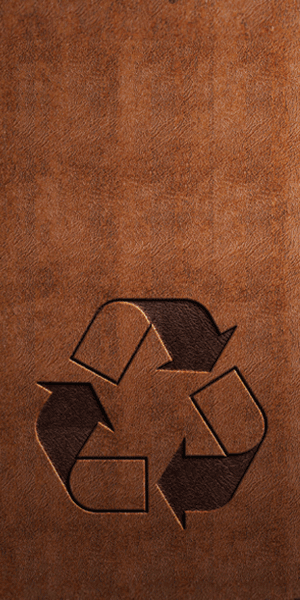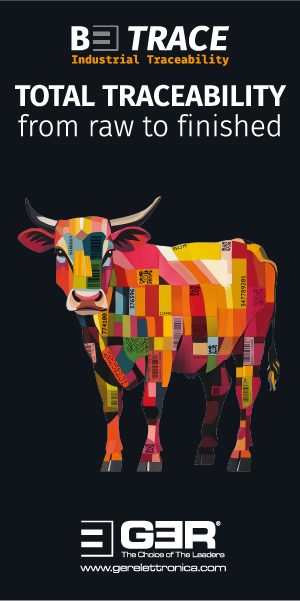Market Intelligence — 03.08.21
Macroeconomics
Over the last two weeks the focus has been mainly on natural events, political conflicts and discussions about consumer prices worldwide.
There have been major floods in Germany and the Benelux countries, as well as in China, reigniting discussions about climate change.
In politics, the tone of the disputes, especially between the US and China, and of course also with Russia, is becoming harsher.
Political disputes have never been good for the economy or for people. China has worked towards different regional alliances with great ambition and, admittedly, with great success. Different conditions apply to each economic and geographical region. One may be important for the sale of raw materials; another an important supplier market for consumer goods. Today, China has reached the point of considering that the world needs China more than China needs the world. That may be right or wrong, but unfortunately communication is currently more in the realm of conflict than of common ground.
The northern hemisphere is currently in the holiday season. This can also be clearly felt on the financial markets. Last week, many companies reported their second quarter results. The vast majority were extremely positive with rising profits and positive forecasts for the full year. Of course, investors always like to hear this and it also leaves the impression that the global economy is on a positive course following the pandemic. This sentiment is still supporting the stock markets and the lukewarm information policy of the national banks with regard to interest rate developments is also not yet triggering any major concerns.
Nevertheless, discussions about the further development of inflation are increasing almost daily and the statistics that are being published speak a clear language. Price increases are well above 3% almost everywhere and, thus, far beyond the established and desirable 2%.
In the classical doctrine, if national banks are called upon to intervene against strong inflation in the interests of currency stability, this would mean higher interest rates. However, the fragile global economic situation and the burden of the pandemic have led to high government spending, which in turn must be financed. Since not all national banks are politically independent, interest rate decisions are massively influenced by this.
However, the allocation of the already excessive market liquidity does not work and negative interest rates are more like a hidden tax in many countries. The fact is that the current economic situation means absolutely unknown territory for economics and, thus, people and companies are being used as beta testers at the moment.
The discussion about rising consumer prices has led to further investments in safe havens such as gold again. The price of the troy ounce rose to levels above $1,800. The US dollar was unable to continue its strengthening and ended the last two weeks at a value of close to €1.19.
Leather Pipeline
The holiday season in the northern hemisphere, which usually leads to a temporary pause in market activity, provides an opportunity to reflect on what is in store for the coming season in the leather pipeline, from October onwards.
There are the optimists who see well-filled order books and generally rising prices and, naturally, have a positive outlook with regard to production and prices in the coming months. Raw material prices have already run ahead cyclically, but the optimists are firmly convinced that leather prices will adjust too. This would justify higher raw material prices and there would be a solid basis for prices to rise further after the summer break.
The pessimists look at the situation from a different angle. Not only have commodity prices increased threefold and even fourfold in many regions, but all other costs that weigh on the final product have also increased massively: chemicals, labour costs, energy and of course transport have become extremely expensive since last September. This certainly varies from location to location, but in general we are talking about cost increases that go far beyond what was normal in the past. A comparison with 2020 is difficult because raw material prices fell disproportionately. However, if 2019 is taken as a basis, there are still significant price increases that ultimately have to be implemented in the market. In addition to the cost problem, the pessimists also point to the uncertain outlook with regard to future demand for consumer goods. The pessimists tend to assume that we are only in a phase of replenishing the pipeline and by no means can we assume that the delayed demand due to the pandemic will be offset by catch-up purchases and, moreover, that it will be so strong that increased purchases in the coming twelve months will also make higher prices easily enforceable.
It certainly helps here to detach oneself from the emotions, hopes or fears of both sides and try to deal as closely as possible with the facts. The changing times, the constant supply of new information, often leads to judgements being made on the basis of the moment and less attention being paid to facts that are relevant in the long term.
It is probably safe to assume that there is general agreement that the total supply of raw materials and the total demand for products made of leather are a realistic reflection of the long-term market situation. It is certainly also correct to point out that there is by no means a single market in which the total raw material supply equates to the total demand. The supply-demand matrix has qualitative and quantitative components. A small goatskin cannot be refined into a valuable furniture leather. In other cases, it is not so much the possibility as the will or the costs that hinder production or prevent it from taking place. Industrial production has set additional limits to many possibilities here.
Perhaps there is a tendency to focus too much on the bovine production chain. Sheepskins can also be used for many leather articles. Despite something of a market recovery, large quantities of skins were not collected after the Eid al-Adha festival in Muslim countries in July, owing to lack of demand and low prices. This confirms once again that the current discussion is not about a sensible circular economy, but about production technology and automated processes, which now influence the demand chain much more than anything else.
Let us return to the question of where we stand before the start of the next production season and focus on the supply chain of bovine products.
The global slaughter of cattle, and the hides available with it, have changed somewhat, but not really in a way that affects the market significantly. Although there is much data available, large regions remain statistically questionable. The reliable data material from the Americas, Australia, New Zealand, Europe and parts of Africa lead us to assume that the total quantity available has fallen by no more than 5%, or will do so in the next 12 months.
The pandemic caused significant disruption to production and shipments in 2020, but demand and sales were not affected to nearly the same extent. This led to quick and significant inventory depletion and the corresponding need to replenish stocks shortly after. This started in China in late summer 2020 before it spilled over to the rest of the world.
Declines in commodity prices in 2020 were exaggerated and did not reflect market reality or the decline in end-product prices. There are no indications that the replenishment of the pipeline should significantly increase the demand for leather or the demand for products made from leather in the next 12 months compared to before the pandemic.
Production and transport costs have increased significantly compared to February 2020. The question of whether the increased production prices can ultimately be passed on to the consumer goods market is self-evident. According to economic theory, this would only be possible if demand exceeds supply. However, since leather is a material that can be used but does not have to be used, this situation would only arise if other materials were not sufficiently available and there were a risk that the supply of shoes, for example, would fail to meet demand. Frankly, this seems rather unlikely to us. One might also consider whether the demand for furniture leather in autumn 2020 increased so significantly because of a general shortage, or because of very favourable prices.
Something affecting all materials and products are the current problems in global transportation. Delays undo planning and no matter what material has been used, it is absolutely conceivable that in the next few months some consumer goods will be limited in their availability to customers, at least in terms of choice. This may then lead to a short-term price jump for all products, but not to an increase in demand for leather.
Even though the market share for material substitutes for leather and plastics is still very small, and this market segment is also very concentrated in Europe, it should not be ignored either. As many of these substitutes are produced locally in small-scale production, they currently enjoy the advantage of short supply chains and faster availability, at least in the European market. This can make them more attractive to many retailers and internet platform as an available product. As long as you are able to deliver, the market conditions for these materials have definitely become better. This could well have a negative impact on leather demand in the future.
The problems in transport and the possible supply bottlenecks that will certainly last for some months may or may not have a negative impact on demand, especially in the automotive industry. In the automotive industry, there must be a focus on the models that will be built in the next 12 months. In the recent past, car manufacturers in Europe concentrated particularly on bringing forward high-yield, expensive models for export. These types are, of course, also the main consumers of leather. Production interruptions or restrictions would therefore disproportionately affect this sector, which has benefited disproportionately in recent months.
We come to the conclusion that the phase of decline caused by the pandemic is over, but this in no way leads us to believe in a significantly higher demand for leather in the coming season. The only parameter that could lead to a short-term relief in the leather chain would be the hide prices. As this is usually neither planned nor voluntary, it is reasonable to assume that the dispute over pricing will become increasingly difficult, perhaps even aggressive, by the end of September. If the considerable burdens on the leather industry cannot be absorbed by the increased costs, then what we have seen many times in the past will happen. Demand falls as market participants leave the market, and not necessarily voluntarily.
The split market is also in summer mode. Demand is declining, which on the one hand is seasonal, but on the other hand also due to the fact that, especially in the gelatine and collagen segment, supply is sufficient again. Increased production in the leather industry in the past months has led to the fact that the stocks in this supply chain are well filled again and therefore the prices are currently stable in the best case. From the Chinese market one hears of declines in the revenues of lime splits.
The situation for lamb and sheepskins is somewhat friendlier overall. In cases that are subject to seasonal influences in terms of quality, demand has normalised and everything that is needed for high-quality clothing and shoe linings is enjoying good demand, with slightly rising prices. However, the general price level is still historically at rather low levels.
Furthermore, interest is now turning to the further development of wool prices. While fine wools had long since returned to very attractive price levels, coarser wools are now also starting to follow suit. If this trend continues, then it would also be possible to present better revenue opportunities for many sheepskins again. It is too early at this point to come to a firm assessment, but by September the situation will have been clarified.
We do not expect any significant events in the coming weeks. The focus will be on developments outside the leather chain. It remains the case that our expectations and assessments of the leather industry in Asia will have the greatest impact by the end of August. Let us hope that the development of the pandemic in Vietnam and the recent smaller outbreaks in China will not lead to any further significant tightening of measures. The effects on transport and production would then very quickly lead to a blockage in the supply chain again and this would, of course, also lead to undesirable disruptions and effects on prices.
We wish all those who are now on holiday a good time and the opportunity to switch off and gather strength.












